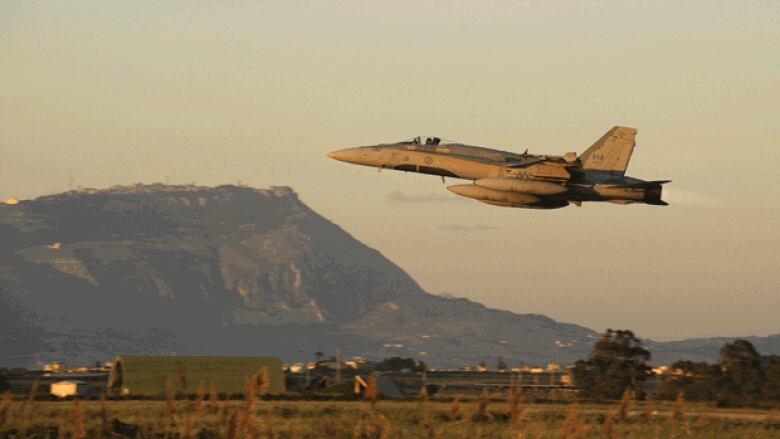Canada's military contribution in Libya

Canada has been involved in the NATO-led mission in Libya since March. During the seven-month conflict,it has committed a total of 635 personnel,seven jet fighters, two patrol aircraft, two tankers and two frigates.
The air component of Operation Mobile, as Canada's mission is known, has been focused on enforcing the no-fly zone imposed on Libya by the UN Security Council on March 17 and protecting civilian-populated areas.
The sea component has helped enforce the arms embargo on Libya and escort supply ships and other vessels involved in NATO operations. Lt.-Gen. Charles Bouchard, a Canadian, heads up the overall NATO uperation in Libya, dubbed Unified Protector.
Below is a breakdown of Canada's military contribution.
Task Force Libeccio
This is the land- and air-based component of Operation Mobile. The headquarters are in Naples, Italy,the same location as the central NATO command centre for the Libya operation, dubbed Unified Protector. The task force is commanded by Brig.-Gen. Derek Joyce
Flight operations are co-ordinated out of Poggio Renatico, Italy. The command centre, which is overseen by Col. Eric Kenny,provides support to the Canadian units carrying out flight operations in Libya, collectively known as Sicily Air Wing. The units fly out of Trapani-Birgi, an Italian air force base in the west of Sicily, and Sigonella, a naval base on the east coast of Sicily. The commander of the air wing is Lt.-Col. Daniel McLeod.
Personnel (estimates):
Headquarters: 80
Air command centre: 30
Sicily Air Wing: 270 (from Air Force units across Canada)
Ships and planes:
Trapani detachment:
- Seven CF-188 Hornet fighter aircraft (three pairs and a spare) from 409 Tactical Fighter Squadron at 4 Wing Cold Lake, Alta.
- Three transport aircraft configured as in-flight refuellers (tankers): two CC-150 Polaris tankers from 437 Transport Squadron at 8 Wing Trenton, Ont., and one CC-130J Hercules airlifter from 436 Transport Squadron at 8 Wing Trenton, Ont.
Sigonella detachment:
- Two CP-140 Aurora aircraft, one from 405 Long Range Patrol Squadron at 14 Wing Greenwood, N.S., and the other from 407 Long Range Patrol Squadron at 19 Wing Comox, B.C.
Sicily Air Wing sorties (a sortieis an operational flight by one aircraft.)
| Aircraft/tanker | Total sorties to date (as of Oct. 20, 2011) |
| CF-188 Hornet fighters | 942 |
| CC-150 Polaris tankers | 247 |
| CP-140 Aurora long-range patrol aircraft | 180 |
| CC-130J Hercules airlifters | 21 |
| CC-130 Hercules tankers (redeployed to Canada in September 2011) | 139 |
Source:Department of National Defence
Task Force Vancouver
This is the maritime component of Operation Mobile, headed by Cmdr. Bradley Peats. It consist ofone patrol frigate, HMCS Vancouver, which has a CH-124 Sea King helicopter and air detachment on board.The vessel, which has 255 personnel on board, escorts and providesair defence for supply ships and other "vulnerable" vessels, such as minesweepers, and patrols the arms embargo zone in the central Mediterranean Sea off Libya.
HMCS Vancouver deployed from Esquimalt, B.C. on July 7, 2011, and arrived in the region in mid-August. It replaced HMCS Charlottetown, which hadbeen patrolling the waters near the northern Libyan port of Misratasince March.HMCS Charlottetown had been originally sent to Libya to bring Canadian citizens home but by the time it arrived, its mission had changed. It was attacked by shore-based artillery on May 12, the first time since the Korean War that a Canadian warship had come under fire.
According to the Defence Department, HMCS Charlottetown conducted 313 hailings and five boardings of "vessels of interest' over five months. Aside from escort and patrol missions, it was also involved in several defence operations against attacks by pro-regime forceslaunched from small boats.












_(720p).jpg)


 OFFICIAL HD MUSIC VIDEO.jpg)
.jpg)



























































































